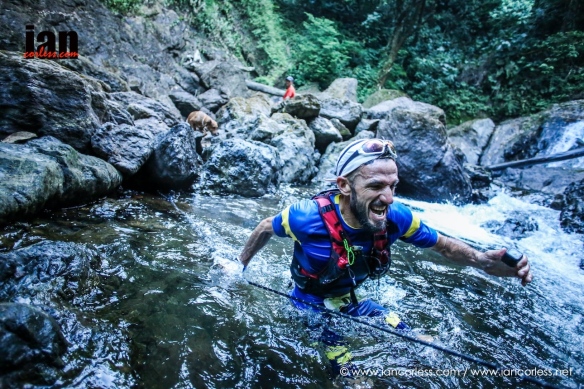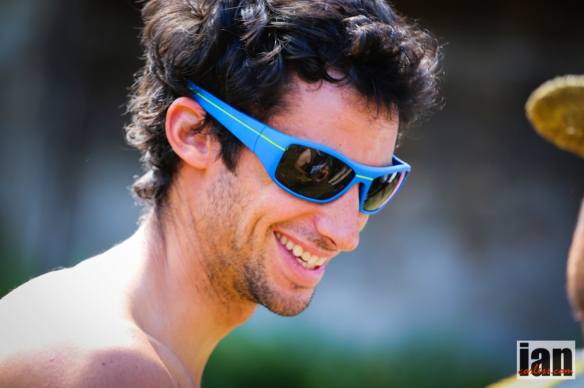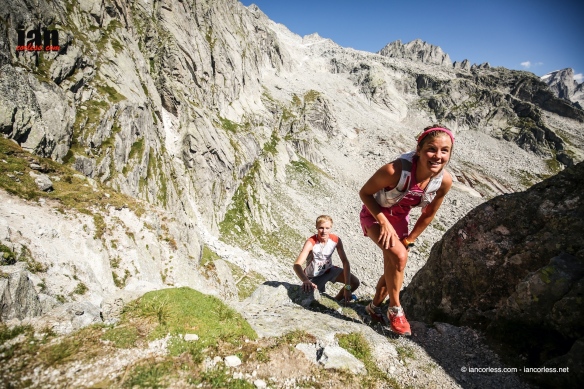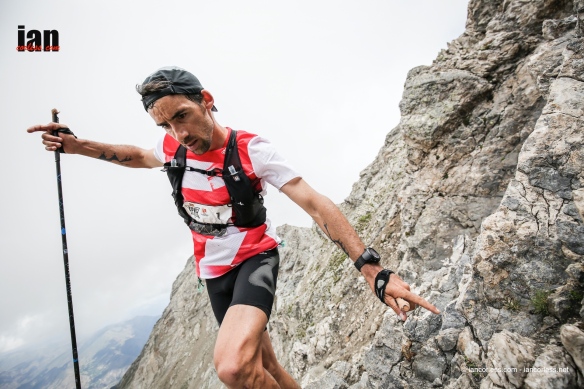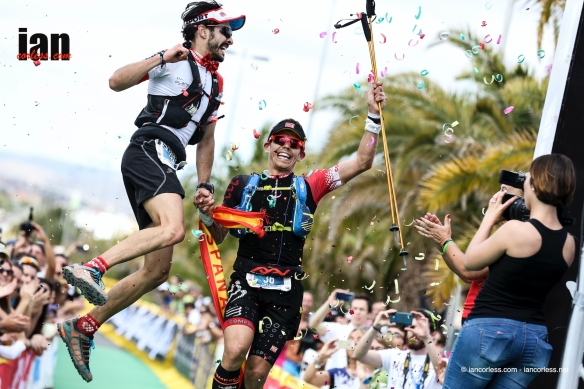
‘Speedgoat’ Karl Meltzer needs no introduction to the ultra-world, Speedgoat was running 100’s when most of us didn’t even know they existed. So much so, he has won more 100’s than any other runner; 38 at the last count. Five of those hundreds came at Hardrock 100, impressive! Speedgoat’s tally of runs and records make history and in 2016, he finally added the ‘FKT’ for the Appalachian Trail to his palmares. It was a long time coming, two previous attempts (2008 and 2014) had left him short but 2016 was different. Speedgoat had had the opportunity to assess his past attempts while helping his buddy, Scott Jurek, achieve his own FKT on the AT in 2015! With this information and a wealth of ultra-running experience, Speedgoat was a different man in the ‘Green Tunnel’ in 2016.
On Sept. 18 at 3:38 a.m., professional ultra-runner and Red Bull athlete Karl “Speedgoat” Meltzer emerged from the Appalachian Trail’s southern terminus at Springer Mountain, Ga., and set a new Appalachian Trail thru-hike speed record with a time of:
45-days 22-hours and 38-minutes.
Speedgoat started his supported run at 5 a.m. on Aug. 3 from Mt. Katahdin, Maine, and averaged approximately 47 miles per day at a pace of 3.2 miles per hour. Speedgoat’s time beats the previous record by more than 10 hours, which was set by Scott Jurek in 2015.
The project, in planning for more than two years, was accomplished with a small core crew consisting of Speedgoat’s father, Karl Sr., and crew chief Eric Belz. Others joined the crew to support Speedgoat for short periods throughout the hike, including Speedgoat’s wife, Sheryl and fellow ultra-runners such as David Horton. The crew travelled alongside Meltzer every day, providing him with food, water, medical attention and logistical support. Speedgoat’s time on the trail typically began around 5 a.m. and ended between 7 p.m. and 9 p.m.
Download and view a full map of the Appalachian Trail HERE
The Appalachian Trail runs from Maine to Georgia stretching 2,190 miles through 14 states. It is roughly the distance between Los Angeles and Washington, D.C., as the crow flies. A thru-hiker will experience 464,500 feet of elevation change, or 16 climbs of Mt. Everest. Thousands of people attempt an Appalachian Trail thru-hike every year, yet only one in four hikers finish the journey, and they typically take five to seven months to complete the entire trail.
Here is Speedgoat’s story.
******

Ian: Many, congratulations Karl, you did it!
Karl: Yes, thanks. It was a long journey but yes, it’s over. Thank God. All the misery and pain is over.
Ian: All the misery and pain. Well you say that, but it’s not is it? Because now you’re going through media and interviews and repeating the same story to a lot of different people.
Karl: At least a dozen times yesterday…!
Ian: [laughs]
Karl: Yes, I did talk yesterday for maybe six hours. Then we did the CNN World Sports thing, which was right around the corner from the hotel I was staying at. Yes, it was a busy day. By the time I got to the last three interviews I was like, “Can you ask me what’s next one more time.” But it was good. There was a lot of part of that going on. I have quite a few more this afternoon, but they don’t start till 11.
Ian: That’s good. That’s good, so you can give me some time and hopefully we can ask some interesting questions. Epic journey, epic journey. It was fantastic being here in the UK getting the updates from Red Bull. What I was doing was re-showing them on my website and getting the audience engaged, because they really wanted to know what was happening. Right from the off, it appears you started with some real intention and nailing it for the first seven days. In retrospect, do you think that maybe you were pushing a bit too hard in those early seven days?
Karl: Actually, everything was super textbook and really good all the way for the first 19 days. The first seven days you get to go in New Hampshire, you must get to that point to set yourself up and put yourself in a good position. Honestly, I felt on my game… I was getting plenty of sleep. Everything was working out well. I wasn’t overly tired. I wasn’t pushing myself or getting to those points where I was worked or thinking, “Oh my God, I’m not going to get up tomorrow.”
New Hampshire went perfectly well. The big game in New Hampshire is the Route 302 which is called Crawford notch. It was 47 miles over Mount Washington and then over Carter Ridge, it was a huge day. I finished it a little after 10:00 PM. The following day I think I went like 28 miles, but that 28 miles was ridiculously hard but I was good that day…
Generally speaking, through 19 days before my shin started bothering me, I was a full day ahead of Jen Pharr’s pace, and when I got to that point I was like just stay even with her, with her pace through Pennsylvania which was my plan, and then just try to close it out from there. My shin went down running on flat grass, the easiest piece of the trail of all, flat grassy piece but it just tweaked and I was like, “Uh.” When I was going along I was like, “Oh man, that might be the one that throws me off.” And it did, it obviously did.
Ian: It’s interesting with day 19 because that was the day that I phoned in and spoke to Eric Belz whilst you were on the trail. He was giving me an update of how things had been going. He gave me an itinerary of what it’d been like and how you were crushing the miles, how they were giving you ice cream and looking after you. I will come on to that… One of the things I remember reading on the day nine (I think it was) reports, when you were going through Mount Lafayette, Eric referred to a knife edge. I couldn’t quite place what the knife edge was. What was that?
Karl: You mean in New Hampshire? Well, there’s a ridge called San Antonio Ridge. It’s not that technical of a knife edge. You’re on a ridge line that’s fairly narrow, but it’s not super. It’s not like exposed or anything. Yes, he had been up there before in 2014, he hiked that section with me when I was doing trail at that time too. New Hampshire is ridiculously hard. That might have been what he was referring to as a knife edge. It wasn’t really super techie or anything like that. It’s called San Antonio Ridge, and it’s a very very super popular place. You see more hikers on that trail probably in New Hampshire than anywhere else other than maybe Mount Washington.
Ian: And then day 10, you’re into Flume Gorge the White Mountains, and I think that was the first sign where you were beginning to show some wear and tear on your feet. Eric also touched on the fact that you were mentally beginning to feel a little fatigued. Neither of those things obviously turned into a big issue, but one of the important things about anything like this where you’re doing multi-day and going out for another 40, 50 miles is maintenance. What was that maintenance side like, and how did Eric and Senior (Karl’s Dad), and Sheryl (Karl’s wife) keep you on track, and how did you react to them keeping you on track?

Karl: We had some protocols. Every time I stop, when I stop at the end of the day, my dad’s job if you want to call it that, Sr’s job, was to have me setup so I can clean my feet. He’ll just setup a bin of water and some cleaning stuff, some soap or whatever. The first thing I do when I came in, I sit down, he took my shoes off and I clean my feet up. I never had any blisters on my toes over the whole time, the whole trip. They were solid as rock. I had a blister on my heels, but those things we drain them early in the thing and run and they just went away. Generally, we just cleaned my feet and got those taken care of, have them dried out, and just moved on.
That was the protocol for that. After we did that, once we cleaned my feet and I was good. I was sitting on a higher chair and I went to a lower chair, put my feet up, put ice on my shins and I ate my dinner as I was icing my shins, and then I went straight into bed. I was in bed within 30 minutes usually after every stop; after every night, which was super-fast. I certainly fell asleep quickly. It was really good. They were super-efficient in terms of taking care of things. The further we get down the trail, the more efficient they got. When you did talk to Eric, we were at a place called Bake Oven Knob and that was in Pennsylvania. I think that was my day 20, maybe 20 or 21? Maybe 20.
That morning, when I woke up at Bake Oven Knob that was the day my shin was probably was at its worst. It was like on fire. I woke up at 4:15 AM in the morning or something like that and I couldn’t really extend on my right leg. It was swollen and red and I’m like, “Oh god.” I’m like, “I need to sit here and ice it a couple of times this morning before I get going anywhere.” I did that because again, I was a day ahead of Jen’s itinerary, I had a little time to I waste to say I had money in the bank, it’s not my style, or miles in the bank, that’s not my style but I had to do it.
We did that, and then finally after a few hours, I put my shoes on and I started moving. I believe I only covered 32 miles that day. After 25 miles during that day, again my shin was on fire. Pennsylvania is all rocky so your leg is twisting around a lot. It was just aggravating it even more. After 25, I stopped again I said, “Hey, I got to ice this thing a couple of times.” And then we’ll just see what happens. It felt a little better after I sat for a while and then I went another seven miles down the trail, and I think we finished at 32.
Ian: Yes, that was the day that Mike joined you. He made a comment that because you are obviously protecting your shin, your knee was buckling underneath you during the run. What’s going through your mind at this point Karl? Because it wouldn’t be an underestimation to say that completing the AT in a fast time has been a priority for you for years. I think we both knew before you went into this when we discussed it that this was probably the last chance to get this record. Did you see it? All the hard work starting to potentially crumble beneath your shin?
Karl: Well, maybe? I think the thing is Scott got hurt, Jen got hurt, I got hurt. With my knee buckling thing, that issue was with me back in May before it even started. The whole thing is like it wasn’t affecting my running. I just put on a knee wrap on my knee, and that reminded me not to extend out, hyper extend my knee. The brace isn’t going to do something bad, the brace isn’t going to stop you from hyper extending your knee.
But it was protecting a little bit from doing that just in my mind and just physically. But then that day again, when Mike was walking with me and my shin was killing me, my knee buckled a couple of times and Mike was walking behind me. I was like, “Oh my God. Why is this happening?” And feel like, “Why are these things aren’t falling into place?” But yes, I was a little worried about it for sure. I was just like, “Well, who is my knee going down now too?” I started to get mentally frustrated. I started getting a little upset.
Again, having that cushion that I had built up made huge difference because it gave me time. It’s not like I fell 40 miles behind quickly because I was hurt. I was still in it. I just said to myself, “You just got to stick with it for a while and see what happens.” I do remember in 2008 when both my shins were bothering me, and on the Pony Express when they were bothering me, you sort of keep using them and keep walking through it, it sorts of goes away. I said, “Well, we’ll see if that happens here.” As you saw, we did 32, and then we did 50 something, and then we did 16 which again my shin was on fire that day too. The next day, we did 50 something…
Ian: It was interesting watching because there was obviously this dilemma going through your mind, and I’m sure your crew’s mind. You had your blinkers on, and it was very interesting following some of the comments on Facebook. The doubters were going to doubt, and of course they were going to say, “Oh no, the shin is hurting. That’s it. He’s got no chance.” The one thing that I kept going back to in commenting on was, “Look guys, Karl is completely 100% blinkered for this. We discussed it. He knows what he has to do because he experienced it with Scott and there were valuable learning lessons.”
One of the things that was worrying me from the side-lines was that I could see this accordion. I could see you suffering, and then the next day it was almost as though you refused to accept that your body was doing what is was doing, and you were bullying it into doing what you wanted it to do. A classic example was day 20 when you did 35 miles, but then the next day you spent 17 hours on the trail. Of course, this is a real bouncing act, isn’t it? Because that’s your bloody mindedness wanting to get it done, but then the problem comes with day 22; you can be wrecked. How did you manage that? Did you just think to yourself, “You know what, I’m just going to give this everything and see what happens?”
Karl: Yes, absolutely. I think what was funny too is I was sort of telling myself in a jokingly kind of way that, “Well gee Karl, you did 16 miles yesterday so you’re rested for tomorrow.” Seriously, it didn’t make a difference in the rest there because I went to bed 7:15, or 7:30 as opposed to maybe 9:00 or something like that. Because I don’t really do well with sleep deprivation, that made a difference for me the next morning to get up and say, “Okay, I’m up and wired, I’m awake.” I’m kind of, “I’m going to do what I can. I know my shin is going to hurt, just deal with it.”
The rest helped me be able to go those 50 plus miles after the short days if my shin wasn’t bothering me. It was amazing, my shin with those shorter days was not able to re-heal overnight, of course. But the swelling went down so I had more time to just settle down a little bit. I could keep going, and then my gig going into Duncannon, Pennsylvania which is the end of the rocky section of Pennsylvania, I survived. I crashed hard going down that trail a couple of times. You’ll see that in the film probably which is quite entertaining for all the people watching.
When I finally got to Duncannon, it was just a two mile walk through town. I walked through town and I said,” Let’s just… I’m only eight miles behind where Jen was. I’ll stop here, I need to rest and wake up in the morning, we’ll see what happens.” We stayed in this nasty camp around in Duncannon. We got up the next morning. I was driven to where I stopped walking that morning, and I started walking uphill. It was a steep rocky climb for about maybe a mile and half, going uphill wasn’t so bad. It was going downhill where my toes would extend out forward, which would make it sore and hurt.
I get to the top of the climb and the terrain sort of changed where it started to get smooth. There’s an area there called Cumberland Valley where Pennsylvania is sort of known for being smooth. I knew that was coming, and it’s funny because I reached that ridge line and turned into Cumberland Valley and there’s this CVATC, we manage the trail here. I was like, “Uh, Cumberland Valley ATC. Thank God I’m here.” The uphill section is gradual, very gradual uphill I’d say. I started running, yep, very slowly running the gradual uphill’s.
I said to my dad, I said, “I’ll just start to run uphill now and see what happens.” Instead of running downhill, I started running uphill. It was weird but the shin pain went away. When the terrain got smooth and the shin pain went away, I think it is a 53, a 60, and 57 miles all in a row, boom boom boom! That got me right back where Jen was and even put me ahead of her pace. Once again, the confidence builds up, “My shin doesn’t hurt. Man, I’m back. I’m back in the game.” Again, I never felt I ran off pace. I was so confident I could still get there as long as I stayed fairly close to that pace.
Ian: What are the frustrating things I guess for me and people who were following you. Was that for reasons that you discussed prior to departing was that Red Bull and Appalachian Trail didn’t want people to know exactly where you were. Your updates were coming out maybe two to three days late. But day 22 to day 25, certainly looked as though it was a real crunch phase in the whole thing. As you said, day 22 you did 16.4 miles in seven hours, but you benefited from good rest, good sleep. The next day you get back up on the trail, and then day 24, you do 35 miles. Day 25, it didn’t list how many miles you’ve done.
Basically, it reaffirmed how far you’d gone, how far you had to go, what your age was, and it was saying this is crunch time. I got a real sense of feeling that it was a massive pivotal point within the whole thing that this reading between the lines from the feedback and from what Eric was saying. How you pivoted on this point was where the success or failure was going to happen. As you just said, you go into day 26, and you banged out 60.1 miles. I remember writing at the time, I just can’t comprehend it because 60.1 miles for any of us is a big day out just on its own.
Karl: Yes, and the funny thing is too, 60 is a lot more than 50! 10 miles is three hours whatever, but it’s a huge difference because you don’t get that sleep. You don’t get that rest. You don’t get that recovery. Yes, but it was sometimes that was logistics, and sometimes the terrain was tough; that’s near Shenandoah I think? The terrain is a little bit smoother in there, so your average pace is no longer 3.2, it might be like 3.5. That .3 miles per hour over that long period is five miles or whatever. It made a difference in terms of being able to go 60. 60 was huge no doubt about it. I think Scott only pulled one 60-mile day too. Yes, it was confidence. It got me back.
Ian: That day 26 was the day that your dad, Senior, came back onto the trail. One of the questions that cropped upon Facebook on the Talk Ultra feed was that. There was an obvious reference to Sheryl and Senior throughout the whole thing. Its’ obvious how important those people are in your life. This process, because it’s so intense for you and let’s face it, you’re tired, you’re fatigued, you can be cranky, you can be moody, you can be probably pretty offensive at times. But the one thing that I could imagine from the outside looking in is that this type of experience as a family can only bring everybody so much closer together. I just wondered what impact Senior joining you on day 26 had on you producing that 60.1 miles?
Karl: It’s funny that… I can be a little annoying jerk and stuff like that. It was funny, I talked to Dave Horton along the trail about this, he was inspirational too.
He was like “When I was on the trail,” and he knows, because he’s done it, so he understands. He’s like, “When I was on the trail, I would yell at my wife, and I would say not so nice things, and things like that. And he’s like, “It’s sad that we feel like we can say mean and cruel things to our spouse or our dad or something like that, but not others.” I wouldn’t say those types of things to Belz as I’d say it to Sheryl, or say it to my dad. It’s bad that we do that huh?
But I guess we accept the fact that they won’t bite back, or something like that. My dad would just kind of let it blow it over his head. Sheryl will sometimes take it a little more offense, but that’s okay. She sort of mostly will let it blow over her head. She knew that I was dealing with a lot of mental misery. It definitely brings them closer together; they did such an incredible job of always being positive when I would come to a stop. Even if I was grumpy or something like that, they still didn’t bite back at me or yell at me or something like that. It was more like, “Karl, just relax. Calm down.”
Ian: Yes, I’m sure there was a fair amount of stuff said.
Karl: Yes. My dad was incredible, I mean he, well Belz was sort of crew chief. My dad was sort of the monkey worker on the side, always kind of doing stuff. My dad doesn’t sleep. The guy moves back and forth all the time. I mean, he was awake at 3:30 in the morning going back and forth to his truck when I was still sleeping, like, “Why is he up now?”.
He never took a nap when they had an opportunity to rest; they needed a rest too! He just would never do that. He was so into it. It was so cool to spend that time with my dad. Even though I wasn’t there spending time with him, I knew he was always there and helping me out. Yes, it brings us closer for sure. It was quite the experience, having them there.
Ian: So, day 26, 60.1 miles. Day 27, 55.8. Day 28 was just another whopping day. And at this point, I’m looking at my computer and a photograph came on your Facebook page, and it drew complete parallels to the photo last year of Scott Jurek. Remember when everybody discussed about his vegan diet and Marshall Ulrich went on record and said, “You can’t do the AT without eating meat”.

And there’s this photograph of you with your Red Bull scarf around your neck looking damn drawn, looking damn lean. And it just goes to show the incredible impact that the trail, the multiple days of hours and hours and hours on the trail has. Belz said to me that you were having ravioli and mandarin oranges. What was the diet like, and could they predict what you wanted?
Karl: Well, they couldn’t really… They would go and say “Hey Karl, what do you want today to eat? If you want some food, just find something.” I would more or less eat anything. I ate a lot of good food too. The stories came out where it was like Meltzer doses on some beer and candy. Well, it’s not true. I didn’t do it on beer and candy. That’s just the media doing their thing. I ate a fair bit of meat.
I think Belz probably cooked me five or six or seven rib eyes when I’d come the end of the day. I had a steak and some asparagus and some rice and things like that. But I had a great dinner every night. I think that was really, really important. And even though many people thought that I was looking skinny… I’m a skinny guy anyway, and you know me! I’m a skinny guy anyway. Over the whole entire trip, when I weighed myself two days later at the Red Bull office, I had lost three pounds, that’s all!
So, I gained maybe a pound or two back after I finished, but the bottom line is, I was eating a lot of food. I mean, the stuff that I was eating on the trail, I was pretty much eating real food. My last gel I ate was in Maine. I didn’t eat that much gel or chump things or anything like that. I went to real food because I still feel like that just fills up your belly a little more. It doesn’t mean it gives you better energy, but it fills you up a little more.
I ate a combination of anything. Dave Horton would bring chicken for me and ice cream. And I think it was dense calories. So, I was eating a lot. Scott, being vegan, it’s going to be a lot harder for him to get as much protein. He certainly knows what he’s doing, don’t get me wrong, but he lost 19 pounds when he was done. Being vegan, you probably can’t get as many calories. And he was eating all day long, too. He was doing the same kind of thing, and I think, what Marshall said, it’s like, you do need to eat meat. You need to eat a lot of protein. I drank a lot of Ultragen, a lot of calories there. I did a lot of that kind of stuff. I ate a lot of sweets. I ate a lot of cinnamon buns.
Ian: [laughs] What where you eating Karl…?
Karl: It’s kind of funny, but it’s just calories, you know?
Ian: What were you eating between seeing the crew? Or was that not so much of a priority? Because I’m just trying to think that let’s say you see your crew every ten miles. As you’ve said, that’s three or four hours. Maybe even longer in some places. So, you’ve got to be eating something while you’re out on the trail. You can’t just be relying until you see Eric and Senior and Sheryl.
Karl: Yes. I had a small pouch on my little waist pack, and I would just have like a quesadilla or something like that, or a steak and cheese wrap, or something like that. A piece of chicken, a cinnamon bun, a donut, even. I never buy donuts, but they were so good on the trail. I had a little bit of candies for some straight sugar. That article was true. I did eat some candies. Spree was my favorite. They’re just little sugar things. And yes, I ate a combination of protein and sugar and carbohydrates. I would bring a piece of pizza along with me.
But I did eat as much as possible! When I stopped at the van, I probably consumed at least 500 calories. Fruit. I ate a lot of fruit. Those mandarin oranges and canned peaches were just the greatest thing ever. I ate so many mandarin oranges, it’s kind of silly. But I like them. That kind of stuff was boom boom boom and I’d eat a whole can of it in like a minute.
Ian: Just to sort of clarify there, because your pace is going slower, did you feel as though you could take in more calories and that it had less stomach distress? Because we all know the balancing act between eating calories and it sitting in your stomach. And your stomach having to work to digest that food. It doesn’t always go in line with trying to move quicker or faster. But I’m guessing your hiking and jogging pace was allowing you to eat big calories and it not causing any gastric distress?
Karl: You’re right. When you’re going slower, you can definitely digest food. Not once did I have a stomach problem the whole time. I was never like, oh my god, my stomach’s upset because I ate that whole pint of ice cream in three minutes. I did eat an entire pint of ice cream in a few minutes one time. And you would think, “I’m never going to be able to run for a couple of hours.”
But it’s funny because you take that in and you suck it down and I would start hiking and it was like, I was good for about an hour or so after that. I wouldn’t have to eat any food. But after an hour, I’m like, “I need to get in my pouch and get me something to eat.” Your body is such a furnace on these multi-day things like this, that it really doesn’t matter how much you eat at once, because you are. You’re moving a lot slower.
I mean, my average heart rate was probably 100. I’m going to guess, but somewhere in that ballpark. It wasn’t that high. So, I could digest, I could use the fuel and the power from whatever I was eating and not have that stomach distress. Again, any 100-mile race, or smaller, shorter races, there is that fine balance of taking in too much at one time. But it is pretty easy to just eat whatever you want and not have that problem.
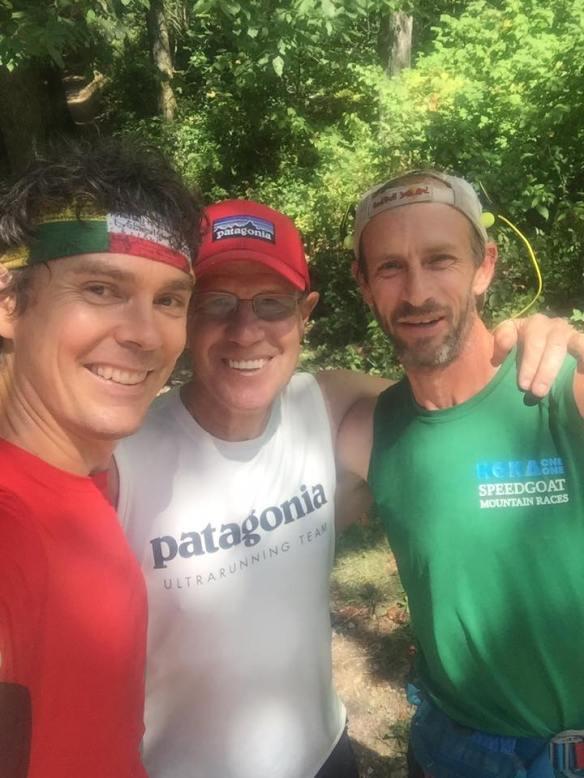
And Dave Horton would say the same thing, and so I’m sure Scott would say the same thing. It didn’t matter how much I ate at a stop. It never bothered the stomach. Scott’s stomach never bothered him either. Dave Horton said he had a lot of problems. He’s like, “I could never eat like you, Karl.” I sat there one time, he brought me a bucket of chicken, and I got a big bucket of chicken at one place, and I ate like the whole thing.
And he’s sitting there watching me eating, and he’s like, “Man, I could never eat like that. I couldn’t eat it when I was done.” And he’s like, “You are amazing.” I’m just like, just give me another piece.” I would just take it right down. I didn’t have problems with that. It was just fortunate, you know. Obviously, that’s why I didn’t lose 19 pounds, probably.
Ian: Absolutely.
Karl: It was cool to be able to do that.
Ian: Let me talk about day 29, Virginia. Again, I’ve said pivotal points. And it appears this was another pivotal point. That day, you covered 50.4 miles. And Eric said that it was relatively pain-free because you’d found a new way of taping your shin. What was that? Was that just a little bit of luck, of trying different methods? Because I know that you’d been wearing a compression sock and you’d tried taping it.
And you were icing as much as you often could. But you found a way of taping that seems to just work?
Karl: That information came from Scott when I was in Duncannon. Belz called Scott and I was just talking about my shin, why it was bothering me, where it was hurting that kind of a thing. Scott has a physical therapist background, so he’s like, “Try to get a brace or like a wrap – that will compress your interior tibialis, the muscle there over your shin. And compress the muscle belly.
Don’t put the wrap over your tendon, down lower towards your foot. When my leg came on fire, that wrap was down on my tendon on the lower part of my foot, and it was there and it was freaking killing me. I changed the location of it a little bit, and it just didn’t hurt as much. That was a game changer.
There were a few game changers in this whole thing that gave me the record basically. There’s another one down the road I’ll explain in a minute, but the allocation of that wrap helped. I never took it off all the way to the end. I’m like, “Just wear it.” Even though it wasn’t bothering me later. I’m like, “Just keep it on dude.”
Ian: Exactly. If it ain’t broke, don’t change it. Don’t change it. You said the game changer, and it was that game changer that strapping that made you on day 30 cover 60 miles.
Karl: Little things that count.
Ian: What was very interesting was that you’d obviously got out for the day, you’d planned to stop at 6:00 PM, but that blinkered vision, that feeling good, maybe the reassurance in this new taping sent you out for another 11 miles. Of course, at the end of that day, you’re feeling damn good. Your crew are thinking, “This is amazing Karl. Is just absolutely killing it.” I made a comment when I wrote about this and I said that you were killing it and I was blown away by your tenacity.
Karl: It was amazing how it came about.
Ian: Yes, amazing. First, tell me about that, that come back and what goes through your mind to bang out 60 miles when you’re 30 days into something incredible like this? And then tell me about the day after.
Karl: It was weird. I’m running long like, “Why doesn’t my shin hurt anymore?” Obviously, I was trying to do the right thing here with the wrap and icing and all that stuff. But it’s just like suddenly it went away. [laughs] It’s hard to explain why and everything else, but it went away so it gave me more and more confidence. I kept telling myself, “Don’t be greedy here. You still have tomorrow. You still have 15 more days to go. You just got to be patient with it. Don’t do anything stupid. Always watch where you’re stepping.” Again, my shin was still a little tight, it just didn’t have that searing pain that it had before.
Believe me, I was just like blown out of the water that it wasn’t hurting anymore. I was quite surprised. And even everyone like Belz, my dad was just like, “Wow. How come it’s not hurting anymore?” I don’t know how to explain that. It’s like Jen, she had the same thing, Scott had the same thing. I’m sure when Scott hurt his knee or his quad, he tore his quad muscle like a week later it healed. How does that stuff heal while you’re doing 50 miles a day? God, I don’t know. Your body is just adopting to it.
Ian: Can I ask a question Karl, how much other pain did you have?
Karl: Well, soreness like if you run a hard race, the next day you wake up and you’re sore and you’re hobbling around. On these types of things, your body starts to adopt after two to three weeks. I never had that deep soreness or anything like poke your muscles out and you get that sore pain. Not once that I ever really have that type of thing. The real pain is between your ears. [laughs]
You try to deal with it mentally, but as I get going every day, your legs are just heavy like you’re carrying around these two heavy cement logs but you don’t have that excruciating soreness pain. If you’re not having that and you’re still able to walk, you can always walk. And walk is what you’re doing most of the time anyway. If you could walk fast, and I taught myself how to walk a little faster than normal, and I was just able to keep going.
The jogging, you don’t jog very fast. You’re jogging slow. You’re barely picking your feet up off the ground or you’re stumble all the time. The real pain, it really isn’t there– that much. It’s just the pain is between your head and you’re just trying to keep moving forward.
Ian: Let’s go to day 31, because it certainly seemed as though that extra 11 miles that you banged out on the evening of day 30 may very well have been 11 miles too far and certainly that’s what Eric was touching on… in his report from that day where that you were feeling tired, you were feeling fatigued, you’ve got a blister under your foot, and as I can only imagine, I think I would have been done a long time ago…. I don’t have the mental or physical strength to maybe put myself through what you’re putting yourself through, but the highs of day 30 probably were feeling pretty rubbish on day 31?
Day 30 was Virginia when you were in the Shenandoah National Park. That’s when you’d had your leg taped up and you’re sort of planning to finish at 6:00 PM, and then you went out for 11 miles in the evening, and then you did 60 miles that day. But day 31 was Blue Ridge Parkway section. You were very fatigued, and you had got a blister under your foot, your crew got you a little bit happier by giving you two steaks for dinner.
Karl: Yes, the blister thing under my foot I must mention, this is probably the ultimate game changer. There is a guy, Johnathan Basham, he holds the record of the long trail. Jonathan I’ve known for a long time. He was pretty close to there. He came out to visit me, he’s the stay-at-home dad. He’s got two kids, two young kids, and his wife is an ER doc. Now, his wife was off that day. He could come out and say hello, and see how I was doing.
He shows up, and I come in to the stop where my crew was and my left foot was killing me under the bottom center of my foot. I’ve had a neuroma under there for a long time – for years. The same pain, the pain of that under my left foot felt like my neuroma. It was numb. It was pretty excruciating to step on it. I got to the stop and I said, “Man, my foot is just on fire. It’s killing me.” Jonathan was sitting there, and he says, “Karl, how’s it going.” I took my shoe, “Oh my God.” Every time I would put my foot down in the ground, it would start throbbing, like throbbing hard.”
John looks at it,” No, Andre Thompson had this too back when he did it. It’s just a really deep blister, like way, super deep blister under your foot.” I was like, really? “Do you have anything to try to drain that thing?” I said, “Well, I have a scalpel.” It was a needle type scalpel. He’s like, “No, that blister gets wider as you stick it. Do you have like a needle or a safety pin or something like that?” I was like, “Well, we have a safety pin.” We tried that, and it got a little bit of fluid out, but not everything. He’s like, “I’ll tell you what, tomorrow, I’ll bring you a surgical needle.”
He shows up on cue at four o’clock in the morning, and I’m awake ready for him. We stick my foot with the needle, and we got all the fluid out. I put my socks and my shoe on, and I started hiking again, all pain was gone, and my foot was an entirely new foot. The pain was absolutely gone. That was the ultimate game changer. Yes, it was incredible. Suddenly I could get running again… it totally got me jogging again.
Ian: This way day 32?
Karl: Yes. I guess it’s 32.
Ian: Yes, day 32 you did 57 miles. I think what’s interesting here is you’ve just said that draining your foot was a game changer. But also, day 32 was also nearly the day where you ruined your whole attempt. Because that was the night that you actually slept out on the trail. You slept at Scorched Earth Gap instead of continuing for another four miles to your crew. You bedded down on the trail. You had a bad night and then what followed on day 33 was one of those days that probably your crew and you want to forget in that you were just completely exhausted.

You couldn’t function. They found you face down asleep on the trail and basically you just said, “I need to sleep.” During the middle of the day you went and slept for three hours. I guess that was a really awful time for Eric and Senior and Sheryl in that they’re looking and thinking, “Carl, is this it? Is this over?” What was going through your mind at that point?
Karl: When I slept on the trail, Eric packed the tent, he had food for me and he did everything right. I got to him a little after ten so it was kind of a late night for me too. They got there and we went to bed to sleep and I did not sleep very well. We tossed and turned a little bit and it just wasn’t very good sleep. We got up at four o’clock in the morning and I got my shoes on and stuff and I started walking. Eric picked up the tent stuff behind me. He said we’d all just catch up. I started walking and I was just super-duper fatigued.
Every time I went uphill I was just like, I couldn’t. I was just so slow. My legs were so tired. That lactic acid burned and built up after every step. We went in a mile or two slow and I said, let me crash for 20 min. Give me a 20-minute power nap and see if that makes a difference. That’s when you saw the picture where I was face down trying to sleep on the trail. I was only down for 20 minutes on the trail that time and Belz was like, “Okay Carl. It’s 20 minutes.” I was like, “All right.” I got up. The same thing. It was just like I had nothing in the tank!
It was like going on empty. I finally get the van. Five hours for 10 miles which is ridiculously slow. I got to the van and I was like, “I need to sleep.” I just walked there and I went right down. Sheryl was there and my dad was a little like, “You know you can’t do that.” I’m like, “Well, I’m sleeping for two hours.” This is when I was the ultimate jerk. I won the award for the ultimate jerk. I was just like, “No. I’m not going anywhere. I’m sleeping. Leave me alone.”
Two hours. I slept for a while and, did that help me? I guess it helped me a little bit in terms of waking up and having a little more energy. But we were kind of milling around the van and stuff like that and I was just really frustrated. Obviously didn’t have a pack while I was sleeping and stuff like that. I just kind of got up and I just walked off. I was mad. I just kind of walked off and got on the trail and l said, “Don’t give up.” I told myself, “Don’t give up yet.” I just got on the trail I started walking south… my crew never saw me leave.
Ian: I know. I can imagine them going to look for you and suddenly you’ve disappeared and then they have no idea where you are. You’re somewhere down the trail of course. Then they are rushing packing things away to go and meet you at the next stop.
Karl: I expected someone to come behind and say, “Hey, wait. Where are, you going?” But I kept looking back and, “No.” I walked about a mile and a half or something like that and I saw a couple of other hikers. I said, “Hey you guys. If you see people down the trail, if they’re looking for a Speedgoat. Tell them, I am on the trail.” Then another mile or two went by and Sheryl came running backwards towards me. It was a short section. It was like five and a half miles or something.
She came running backward. She just gave me some water. I didn’t need water or anything. She gave me some stuff and I just kept walking to the next stop and then I consumed a massive pint of ice cream. Still frustrated and all that but I got my craft together a little bit and put my pack on and I walked those seven miles. That’s when Dave Horton showed up again and was saying to me, “You got to keep going. You’re still in it. The foods are in front of you. You still have it, Karl.”
He was trying to inspire me to do another seven or eight miles. He was like, “You’ve done the seven or eight. You’re still three miles ahead!” I’m like, “What dude? I need to sleep.” I had to the stop and I decided that I would be better off sleeping instead of trying to push seven more miles and get there in the dark. I need to sleep. I knew that if I slept eight hours I’d be much better tomorrow. That’s what I did and then obviously, you know things turned back in my favour again.
Ian: Yes.
Karl: It’s funny, I had one day where I was just so tired that I just walked into the van and “boom”. Then I went down for three hours. A lot of it is in your head but at the same time, I just felt like I had to do that. Again, I wasn’t out of it because I heard I was a little bit ahead over general. I wasn’t out of the game yet.
Ian: It brings up so many questions. But let’s think back to your last attempt when you failed. We’ve discussed that in-depth and one of the things that seem to be far more significant about the failure last time was probably not so much your physical self, but more to do with your mental self and the fact that your crew weren’t quite doing what you needed. Now you obviously learned from that process. You got to witness Scott last year and we discussed in the build-up to this attempt and questioned, did you have the grit? Did you have the blinkers? Where you prepared to go back out when you were tired? Was your crew going to be nailing it?
It’s just unequivocal yes to all those points this time around, isn’t it? You knew what had to be done. But also, what is so important is that Eric and Senior and Sheryl just seemed to be so on the ball – making sure that you had what you need. They were there for you. I know that you’ll give them credit. But we know how hard it is to follow somebody for 40 days on the trail with minimal sleep, looking after you, finding you, feeding you, packing up, breaking down. It’s just an incredible challenge.

Karl: Well, they stayed positive all the time. That was the whole thing. Instead of arguing or not, not giving me grief about being a jerk or something like that. It rubbed off me. The positive parts rubbed off me. Why aren’t they yelling back at me? Sheryl and I had a few conversations that weren’t so pleasant. But at the same time, she kept saying, “You’re not out of this yet. You can do this. You can still do this.” I had to believe in that and she helped me believe in that.
Again, they didn’t get negative and kind of walk away. They just said, “Karl, you’re still in it. Don’t give up yet.” I still knew in the back of my head that I was still in it but I never wanted to quit. There’s a lot of time and effort spent on this thing. Not just Redbull, but all the money in support. It’s just one of those things that you must stay positive and it worked. It worked. The crew was amazing. Crew was super important.
Ian: After day 33, I think Eric said it was probably the lowest day of the whole AT experience. It was a day where you covered 23 miles. You physically and mentally were feeling jaded. Day 34 comes around in you’re in Virginia and the calculations are done. That from here on, in its 50-plus mile days to get the record. You go out and you bang out 50 miles as though it’s a normal scenario. It goes back to the amazing highs and lows of being out on the trail. Do you think that 50-plus mile day was the Karl Meltzer determination, or was it the fact that day 33 was a shorter day, and you got more rest and you managed to get out there and kick trail butt?
Karl: A combination of both. I just said to myself after Sheryl locked me out that morning the dark and it wasn’t so good for a little while but I kind of turned the switch on of being happier Karl again. I tried to not being mean Karl. It just said, “All right Karl, turn the switch on. What are you doing? Get your shit together?” I just sort of did and I came into a happier place and then it just turned back to good old Karl on the trail. It was amazing.
Ian: Okay. Then at this point Scott is joining you on the trail?
Karl: A little later. I think a little bit later maybe he joined me. Somewhere like day 37 or something like that.
Ian: Okay, so, talk me through from, say, day 36 because this is the point where I wrote on my website that you could smell the barn, and I know that I was probably a little bit premature with you smelling the barn…
Karl: Just a little, yes, but that’s okay.
Ian: But you knew what I meant in writing that. At that point you’re much closer to the goal than you were at the beginning. And although the smell of the barn might be a faint one, it’s there, it’s in your nostrils. And there are no guarantees because there was still a long way to go. But I guess mentally there must’ve been a change for you, and if there was a change, what was that change?
Karl: Well, you’re right, I mean, I smelled a little. I knew if I kept my crap together I could still get it. That feeling came around day 40 or day 41. I was like, “If your body holds up, you can do this” then I knew I could bang out 80-something miles in the last day. That’s when I started to smell the barn, it was probably 40, 41. I was near Smoky Mountain National Park, and that’s when I knew that I kind of had it. And then Scott came in there too, he was amazing, he ran into places to crew for me that other crew couldn’t get to.

He did whatever to help me, he brought my stuff into camp overnight that one time and that my crew wouldn’t have been able to do. He was inspirational. Whenever we ran together we just were chatting about old times, and the miles went by a lot faster that way too. He made a huge difference. Then he took off one day, he had to go to New York, so he jumped on a plane to New York, came back the next day.
Ian: Brilliant.
Karl: Yes, that was pretty cool. Scott said,” Yes, I’m coming back for sure”, and he made a big difference for sure.
Ian: Yes, certainly on social media Scott’s presence was significant because the community fully realized not only what you were undertaking, but the true nature of the sport. Scott had got the record, you’d been there, you’d helped, and then he was returning that favour even though you were going to potentially break something that he’d worked very hard for. There’s many questions that we could go on and ask about but what was Scott’s demeanor during the attempt? How did he verbally encourage you on the trail, and what hints and tips was he giving you that maybe you knew but maybe you didn’t know?
Karl: Well, clearly, if you would have shown up and Scott was there, you would never know at the time that he held the record and that’s kind of the friend he is, he’s just like — Whatever you need to do, he would take over some logistical stuff. You would never know that I was breaking his record, he was just there to help me, kind of like when I was there to help him. He just did what he needed to do to make me move forward. The funny thing is that on the last day Jenny was like, “Hey, Karl, why don’t you take an eight-hour nap?”
She was just joking around, of course, but it’s just like, “No, Jenny, I want to get it”. But, no, you would never know that he was the guy that held the record because he was just helping me, and that was special, and I felt that from him. He was just like, “I’m just going to do what I need to do”.
Ian: Yes. Day 36, 57 miles. Day 37 was another 50 plus mile a day. Day 38 was 55.6 miles. At this point it looks as though you were cruising. Were you?
Karl: Yes, yes, more or less. Those mileages are basically I needed to get that far, but road logistics had something to do with that too, it was like, “Today you have to do 55 because you can’t stop before that”. Some of those big miles came like that, but I wanted to stay a certain amount ahead of Jen, so that I knew that the last day I’d be safe if I did the 85 miles. So, yes, I was cruising, though, I was still getting done early, I was getting to bed by 8-8:30 PM.
And, yes, it’s just about 15 hours. I get out the door at five o’clock every morning, and I could get those miles in well. It’s hilly down there, but it’s smoother, so you can definitely move better, especially on downhill. You could go a tiny bit faster if it wasn’t so technical, and I was just able to get those miles in, and get to sleep at the same time.
Ian: On day 40 Dave Horton had to leave the trail early but he turned to you at one point, and said, “You can do this. You should quit now if you don’t plan on beating Scott’s record”. Basically, reading between the lines, you’ve got this! Did you feel as though you had this at day 40?
Karl: Yes. I mean, I knew only if my body held up, like I said. Yes, I knew that because, again, the last day I knew I could blow out a lot of miles. And Jen didn’t blow out the last day and nor did Scott. He was just struggling to get there. I had the opportunity, and that was basically by blowing out that last day. I had a 20-mile lead, or whatever you want to call it. So, that gave me the confidence to know that once I started on Saturday morning, I’m going to the end. That’s where I gained all the ground.
Ian: The last day, or the last couple of days lived up to a Meltzer trademark that 100 miles is not that far.
Karl: [laughs]

Ian: I still find it ridiculously unbelievable that after 40 plus days banging out an average of 40 odd miles a day. That you have the strength, physically and mentally, to bang out what was 88 miles…
Karl: 85.4.
Ian: 85.4. And it was interesting, Karl, because I thought back to our interview just before you went out to the AT, and I said to you, I don’t know if you can remember it, but I said, “Are you prepared? Are you prepared to not sleep in those final days to get it done?”. It just seemed as though everything clicked into place physically and mentally, despite highs and lows. Scott called it his masterpiece. Do you feel as though it’s your masterpiece?
Karl: I don’t know if “Masterpiece” is the best word. I was kind of a mess after 19 days. [laughter] But, it was just his call on it. Scott was kind of a mess too at the end. It was totally, necessarily not a masterpiece either, but to me, I call it more of a stamp. Obviously with a lot of 100 mile wins, this was raising the bar just another time, and to say that I’ve won all these hundreds, and then actually did something bigger and more beyond, winning all those hundreds– It was, in my eyes– It’s sort of a stamp in my career. Will I keep running? Of course, I will.
I’ll keep going, I’m not going to end it, but I have nothing to prove. It feels good to be successful the third time. This time I finally got it done and it makes me feel like I can still do this. I’ll be able to go after the 50 age plus records maybe, in a year and a half or something like that. We’ll see what happens, I don’t know.
Ian: Well, you’ve got the record – 45 days, 22 hours, 38 minutes. I’ve got to ask one question… But you went the opposite way to Scott, and one question that springs to my mind, it sprung to several other people’s minds too, is it two records or is it one record?
Karl: I think it’s two records and I even said it to Scott, it’s different, he finished in a different way. George is smooth to finish; Maine is ridiculously hard. Just think, Comrades has a record up and down, right? Hardrock has a record back-and-forth. In Hardrock it doesn’t recognize it that way but we all know there’s two. I think there’s a north to south bound on the AT for sure.
Ian: Okay, so does that mean that you might have a go the other way?
[laughter]
Karl: Not the right time to ask that question but at the same time I doubt it, I think the fact that I got this one time, that was what I was shooting for and I don’t need to do it again. I would have to have quite the incentive to try again but I don’t think so. The misery is too much, it’s just mentally incredibly tiring. Not so much the physical things, just the misery of every morning getting up at four o’clock and grinding out the day. It’s just ridiculous.
Ian: I cannot even fathom it Karl. Many congratulations on the ‘stamp!’
All images ©redbull ©karlmeltzer unless otherwise stated





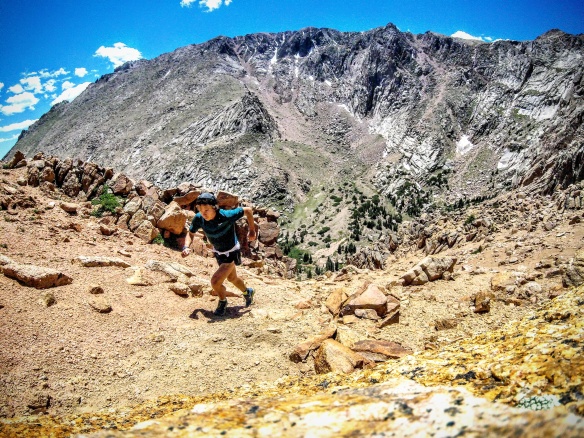




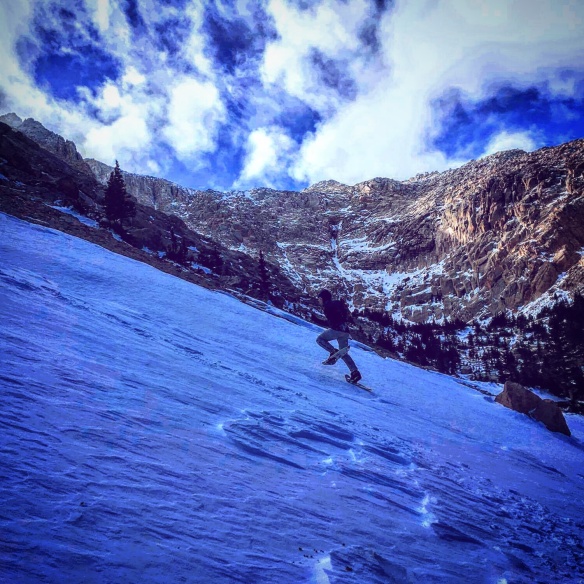
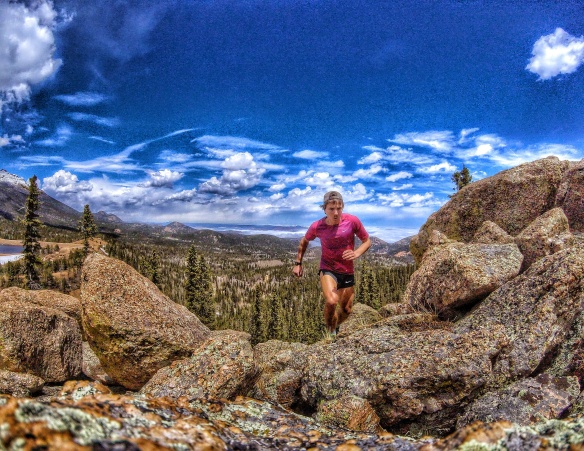














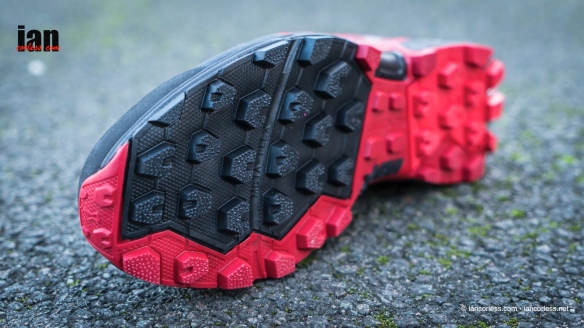


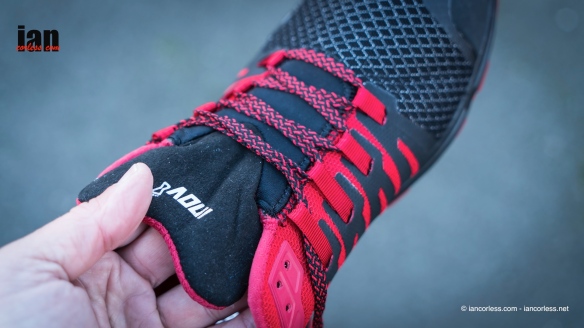


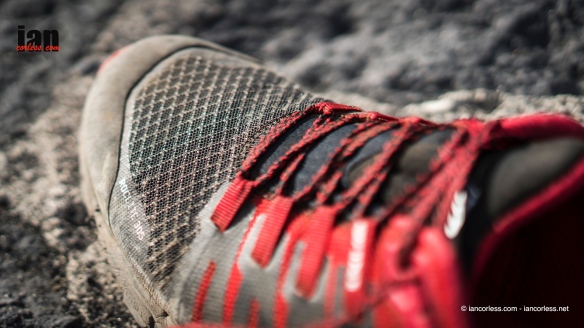


















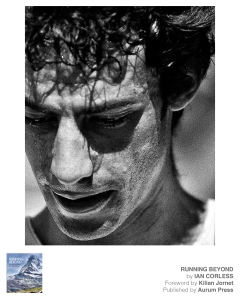











 Multi-day racing brings many challenges and variables not only in the terrain that you can and will encounter but also how one journeys from day-to-day. For example, the Marathon des Sables is a multi-day race that requires self-sufficiency, the only exception comes with water, provided by the race but rationed and the provision of a ‘bivouac’ which provides basic cover which must be shared with seven others. It’s why the ‘MDS’ has become THE multi-day race to do. It strips the runner back to basics.
Multi-day racing brings many challenges and variables not only in the terrain that you can and will encounter but also how one journeys from day-to-day. For example, the Marathon des Sables is a multi-day race that requires self-sufficiency, the only exception comes with water, provided by the race but rationed and the provision of a ‘bivouac’ which provides basic cover which must be shared with seven others. It’s why the ‘MDS’ has become THE multi-day race to do. It strips the runner back to basics.








 Make sure clothing is breathable, comfortable and I recommend that tops cover your shoulders as this can be a problem area in such intense heat and sun. You will need a hat without a doubt and some prefer to run with a hat that has protection that comes over the back of the neck. Ladies – just a word of warning on ‘strappy’ tops, they expose more of your skin and you end up with some crazy sun tan.
Make sure clothing is breathable, comfortable and I recommend that tops cover your shoulders as this can be a problem area in such intense heat and sun. You will need a hat without a doubt and some prefer to run with a hat that has protection that comes over the back of the neck. Ladies – just a word of warning on ‘strappy’ tops, they expose more of your skin and you end up with some crazy sun tan.
 Think about the fit of your shoe. Forget the advice about going a size larger, for me, this is just bad advice. A shoe that is too big will allow your foot to move, a moving foot causes friction, friction causes blisters – the rest is a horror story and believe me, I have seen some horror stories at TCC. You need a thumb nail of space above your big toe, no more! Of course I provide generic advice here and should YOU know you need something different from experience, trust your instinct. Because the trail is often technical, you need a shoe that can handle a multitude of surfaces that includes rocks, gravel, sand, wet rock and so on. You need trail shoes! Consider your gait, the amount of drop you prefer and how much cushioning.
Think about the fit of your shoe. Forget the advice about going a size larger, for me, this is just bad advice. A shoe that is too big will allow your foot to move, a moving foot causes friction, friction causes blisters – the rest is a horror story and believe me, I have seen some horror stories at TCC. You need a thumb nail of space above your big toe, no more! Of course I provide generic advice here and should YOU know you need something different from experience, trust your instinct. Because the trail is often technical, you need a shoe that can handle a multitude of surfaces that includes rocks, gravel, sand, wet rock and so on. You need trail shoes! Consider your gait, the amount of drop you prefer and how much cushioning. Only you know this and nobody can tell you which shoe to use. Also considerer that a shoe needs to be breathable – your feet will get very hot but more importantly your feet will be in and out of water. A shoe that drains water is essential. As an example, Scott Kinabalu (
Only you know this and nobody can tell you which shoe to use. Also considerer that a shoe needs to be breathable – your feet will get very hot but more importantly your feet will be in and out of water. A shoe that drains water is essential. As an example, Scott Kinabalu ( Good socks are essential and in four years of running and working at TCC I have always worn Injinji and never had one blister! Take a fresh pair for each day. Finally, the TCC does have one or two foot doctors who will look after you should a problem happen, my advice, avoid the problems by understanding your needs before arriving in Costa Rica.
Good socks are essential and in four years of running and working at TCC I have always worn Injinji and never had one blister! Take a fresh pair for each day. Finally, the TCC does have one or two foot doctors who will look after you should a problem happen, my advice, avoid the problems by understanding your needs before arriving in Costa Rica.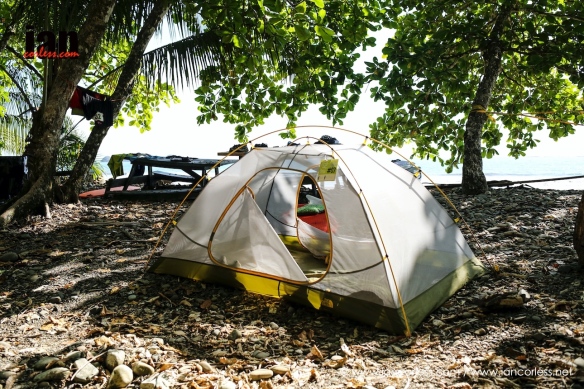


 The course has constant possibilities for you to submerge yourself in water and reduce your core temperature – do so, it’s essential! Never pass an opportunity. Just 2-3 minutes fully submerged will allow you to continue on feeling refreshed. Never run in the sun when you can run in the shade and cover up your head and shoulders.
The course has constant possibilities for you to submerge yourself in water and reduce your core temperature – do so, it’s essential! Never pass an opportunity. Just 2-3 minutes fully submerged will allow you to continue on feeling refreshed. Never run in the sun when you can run in the shade and cover up your head and shoulders.






